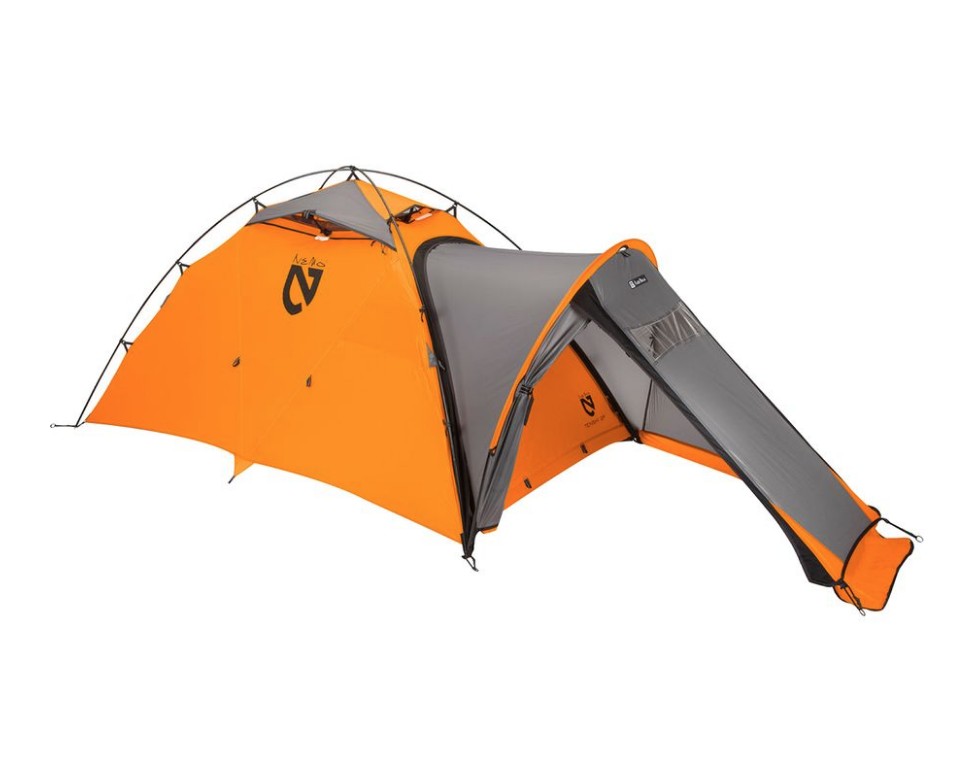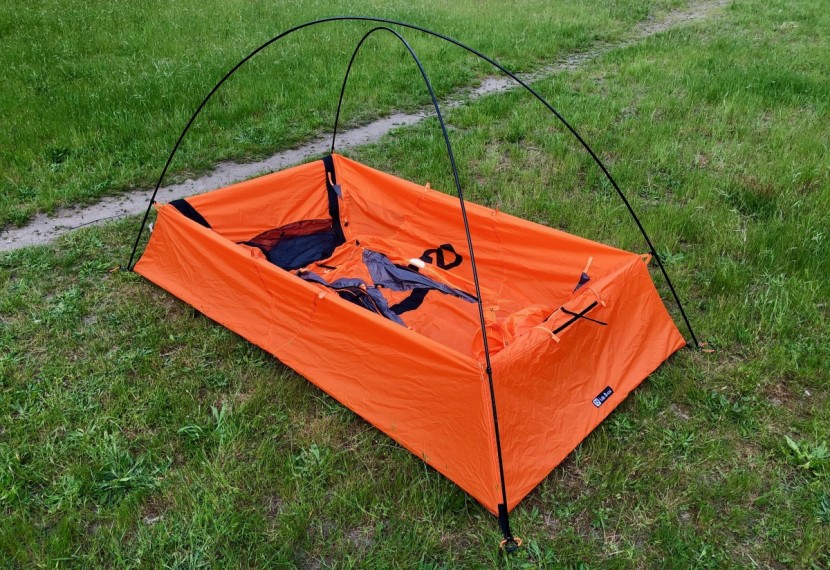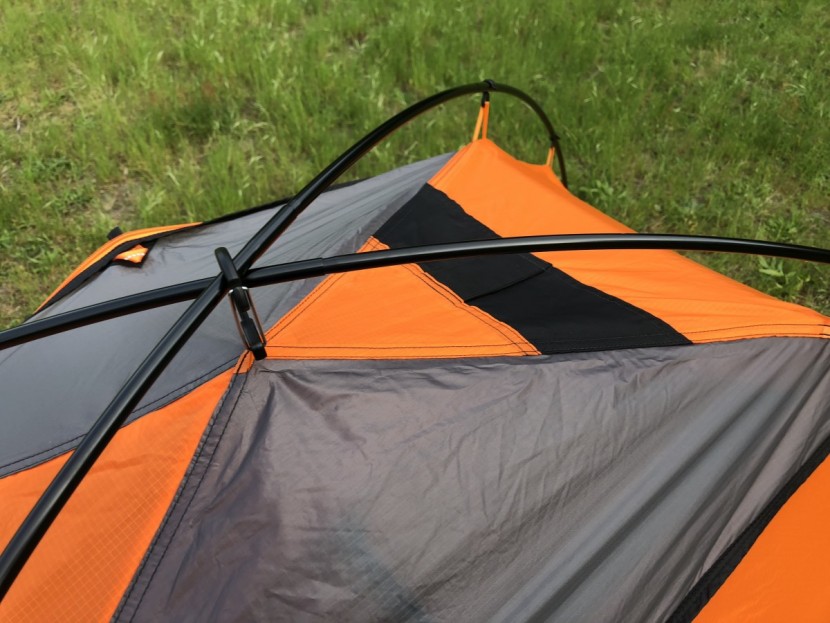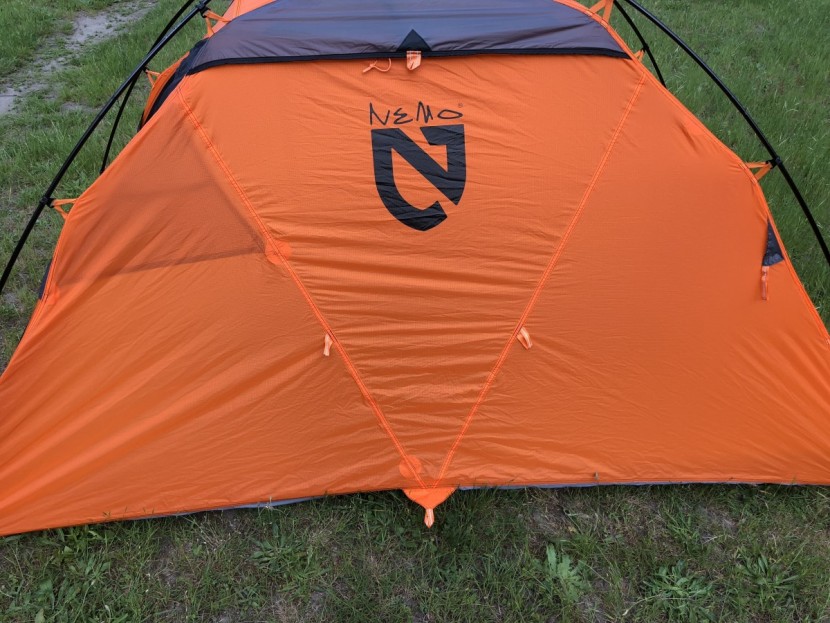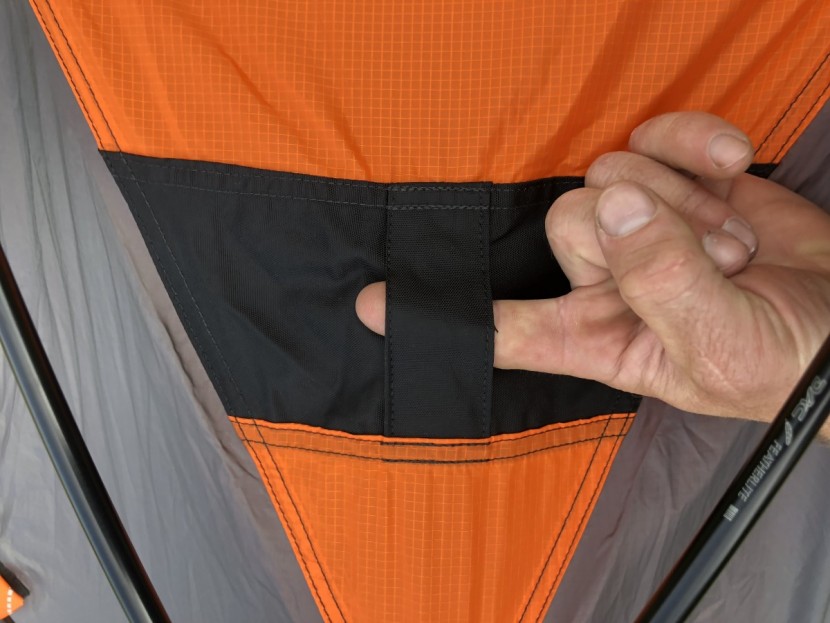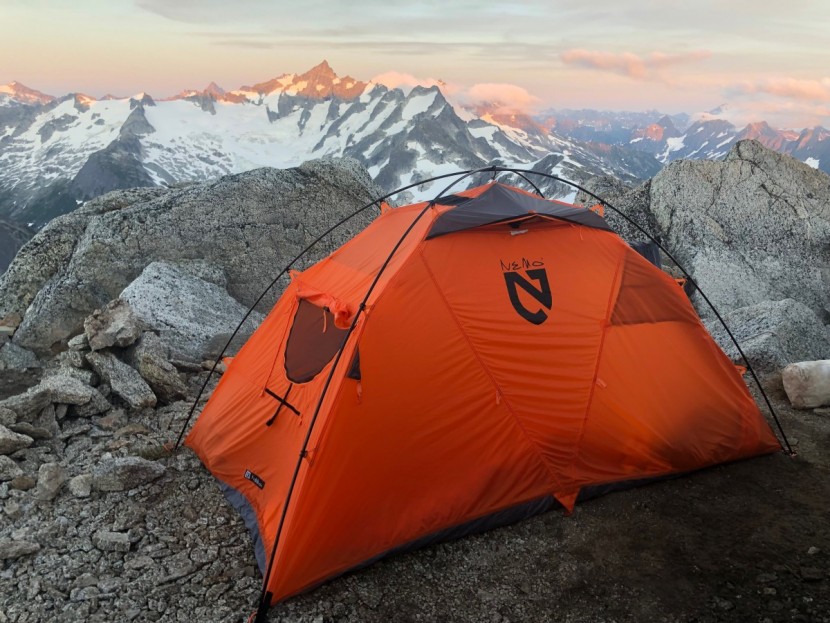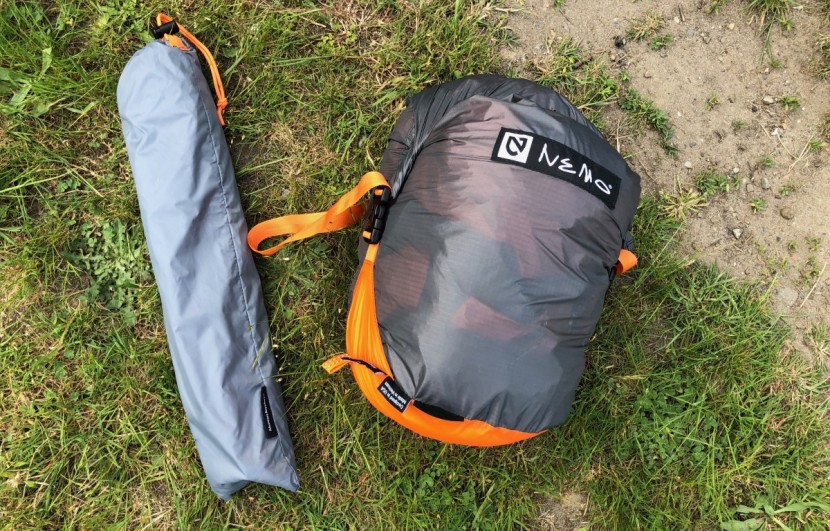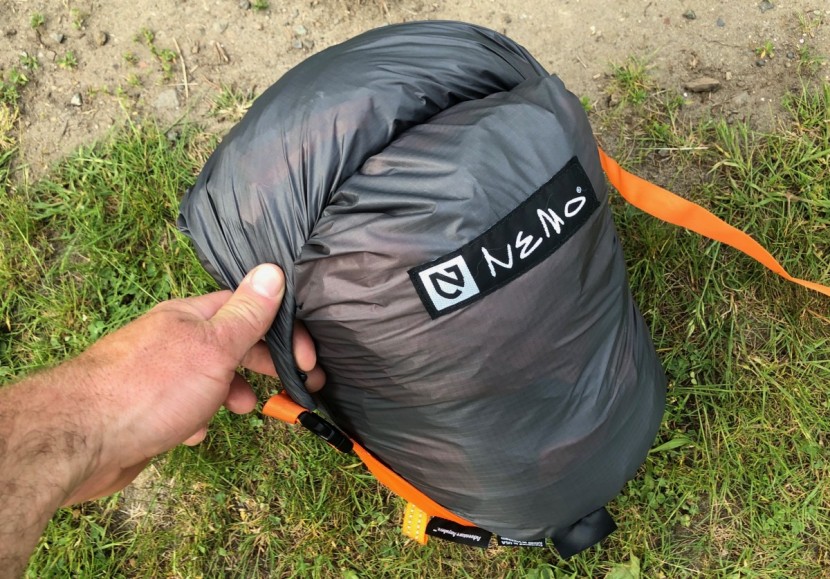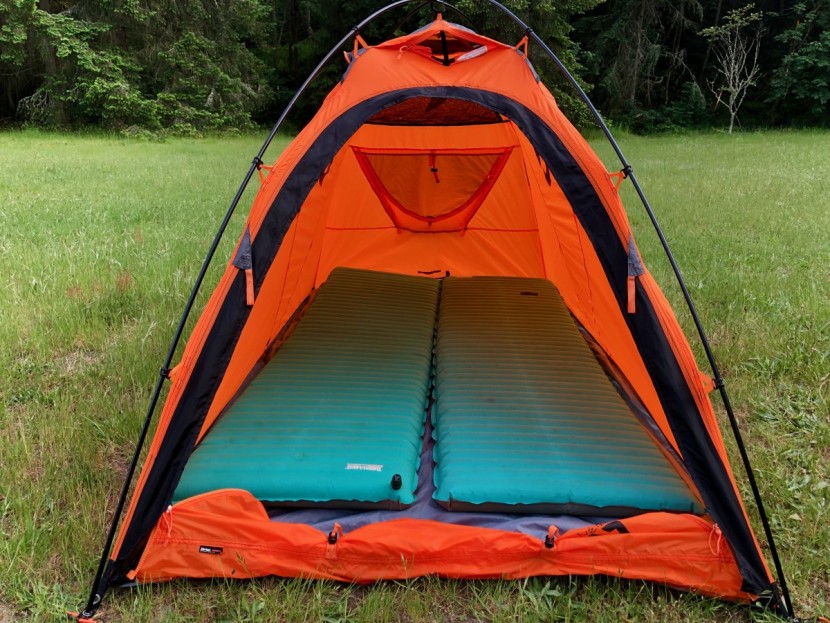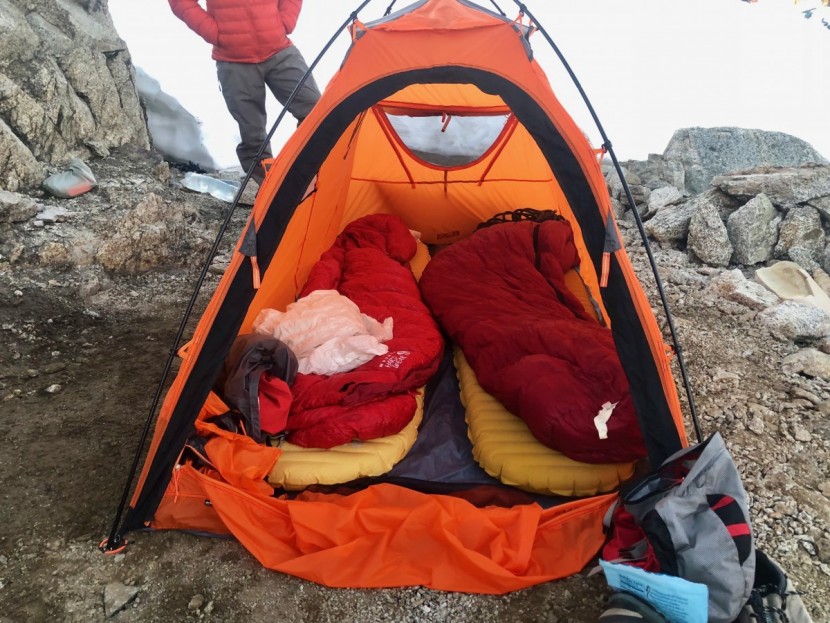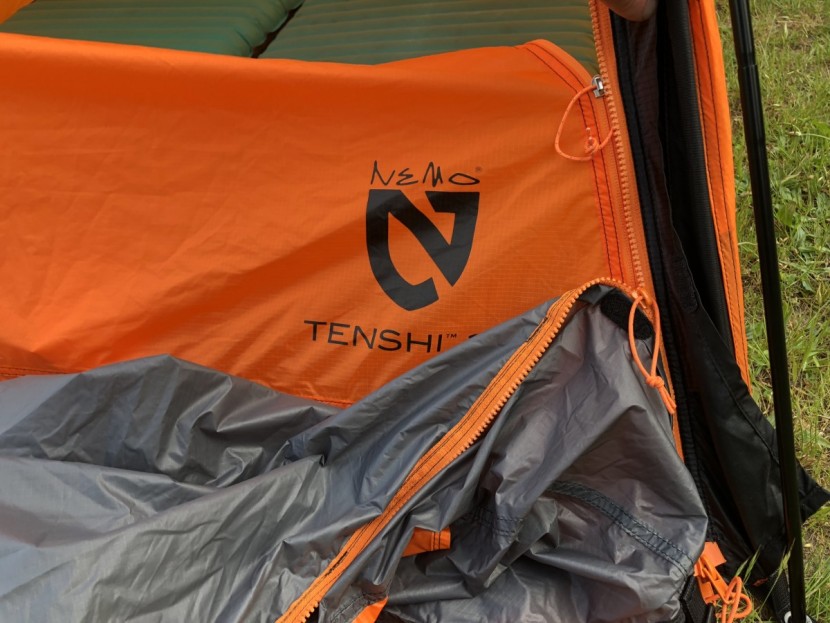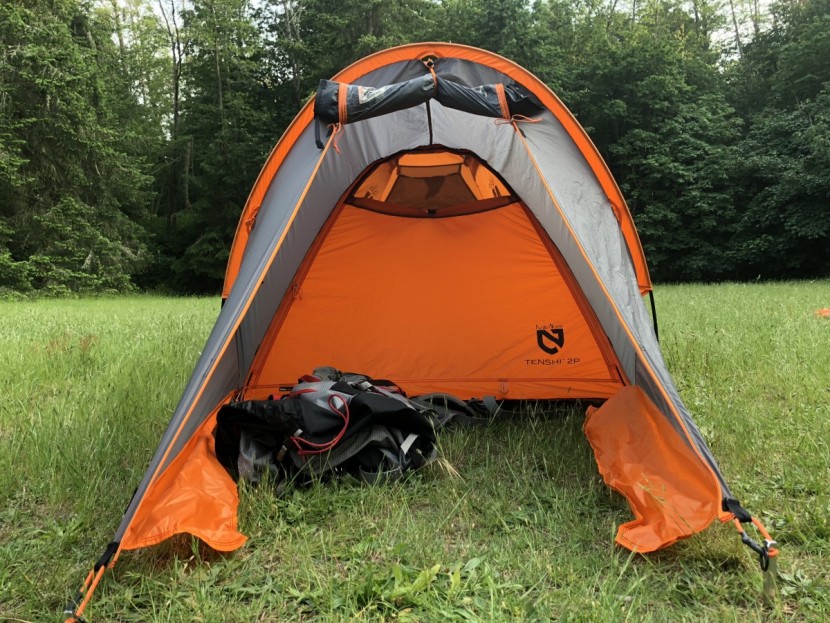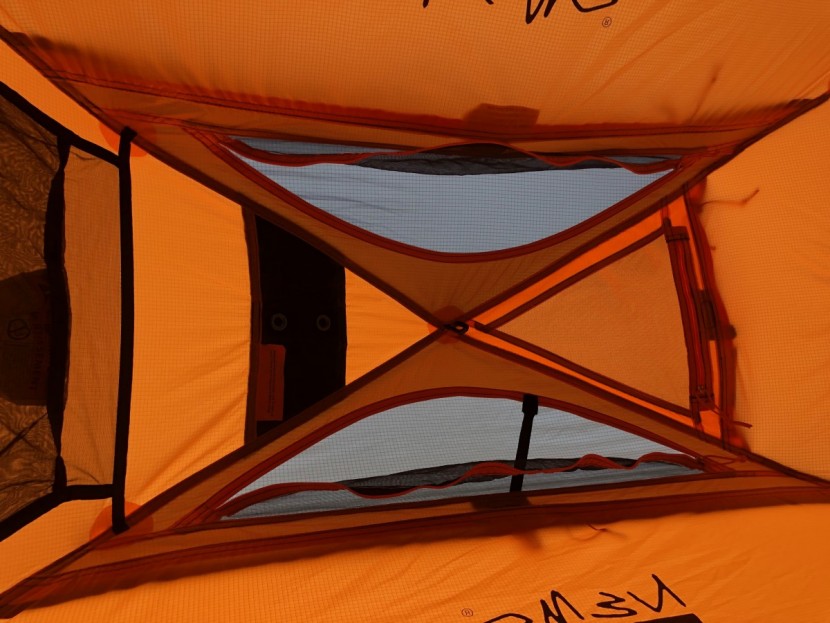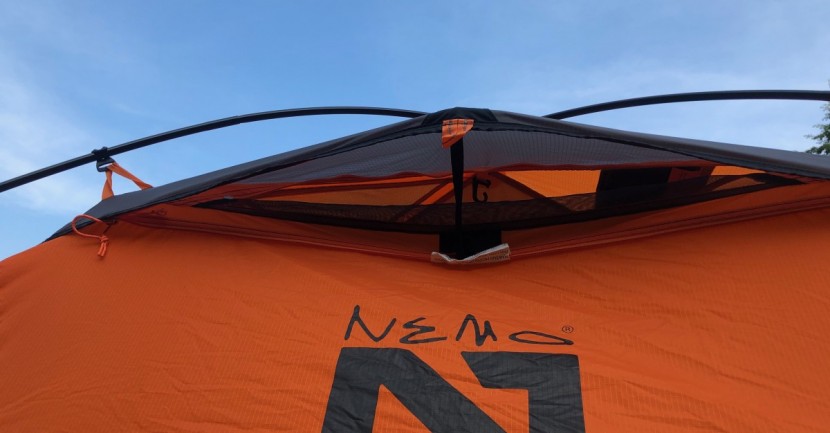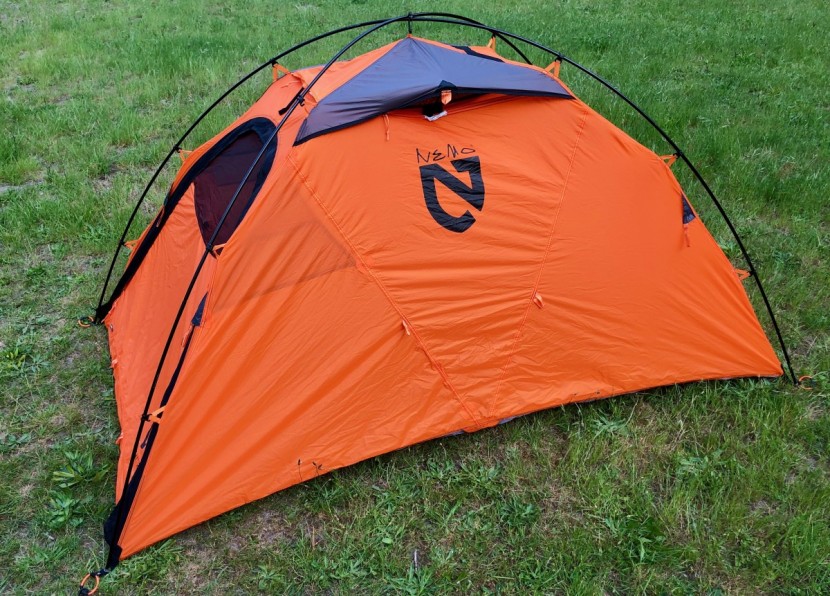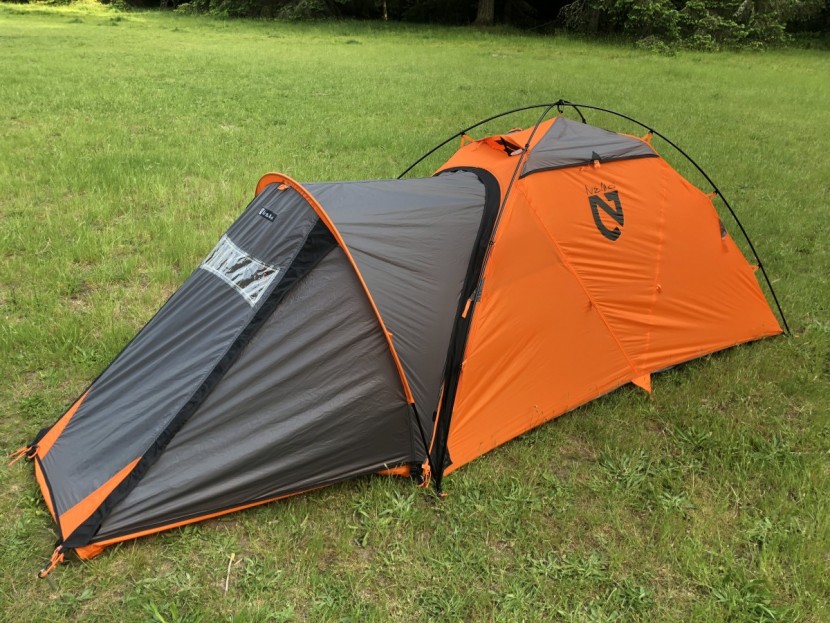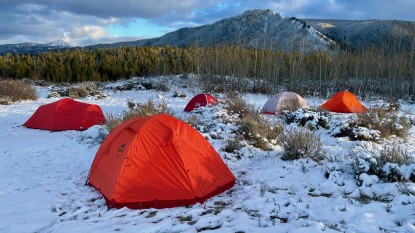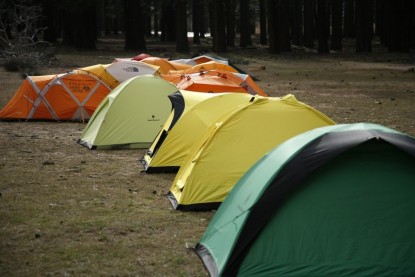Nemo Tenshi Review

Our Verdict
Our Analysis and Test Results
The Nemo Tenshi is a classic 2-pole alpine tent with a lot of extras. It's pitched from the outside using clips, making it one of the simpler bivy-tents to set-up. Like many bivy-tents, it's a single wall design. However, it sports a ton of ventilation options to help its inhabitants manage condensation. It's also on the more spacious side of similarly designed tents.
Ease of Set-Up
The Tenshi is one of the easiest bivy-style tents to pitch; unlike most weight focused tents that place the poles on the inside the body (strong but more challenging to construct) or models that utilize external pole sleeves, the Tenshi uses external plastic clips that make setting this model up a breeze. Its single wall design adds to its ease and speed of pitching.
A lot of double-wall models use similar plastic clips, but then you need to add and secure a separate rainfly. With the Tenshi, you pretty much clip the poles, and you're ready to go.
The external poles were one of the biggest changes when it was updated, and a change all of our testers felt was for the better.
Weather Resistance
The Tenshi is a strong two-pole single-wall tent. It has the traditional four mid-level corner guy points and reinforced ground-level points. This helps it hold up in moderate to stronger winds and snow loading.
It also has two features not found on many other single wall models. The first is the vestibule, which has three holes around the pole sleeves, which doubles for reinforcing its tie-out loops.
Nemo terms a “Sleep Tight Anchor Transfer” (STAT) that improves upon the traditional fabric loop anchor. Instead of tying rope, slings, or cordalette to the outside and feeding something else through the inside loop to your harness, Nemo's setup lets you tie the tent — and yourself in — tightly against an anchor, with minimal slack in the system. The exterior point can also serve as an additional tie-out point in high winds (see the photo that simulates this).
The Tenshi is one of the more weather resistant models we tested and one of the best single wall models to use in the rain. It held up well in heavy snow and strong winds and is a model we'd consider taking to the greater ranges, lower 48, or Southern Canada.
Weight and Packed Size
The Tenshi isn't the lightest or most compact in our fleet but weighs in at an impressive three pounds 15 ounces without its vestibule, which is still one of the lighter tents on the market.
This is where it fills an interesting niche. It is on the heavy side of the weight-focused 2-pole bivy tents but is also roomier with better venting options and thus likely worth the marginal weight for its comfort and versatility. It's just a touch under four pounds without its vestibule. This starts to put it close to “softer” more weight focused double-wall tents, which are bulkier and less strong but are roomier and even more versatile across 3-season conditions.
Livability
The tent has 28.5 square feet of interior space and a 42" peak height. These measurements are slightly larger than average for a bivy tent.
The ability to add the vestibule is a nice feature that is useful for short term base camping (like hiking into a route and then leaving camp to climb a route the next day) or advanced camps at higher altitudes.
The window on the vestibule is a nice touch and can be excellent for monitoring conditions and increasing morale when you're stuck inside all day. There's a small reflective strip beneath the vestibule window that can help you find the tent at night.
Two pockets sit in the upper corners by the door and are more supportive and extensive than those found on many single wall tents we've tested. The Tenshi's finest attribute might be its ventilation system, which is one of the best of any single wall tent we've ever tested.
This is critical to comfort and safety because no PU coated tent fabric is as breathable as we would like. The Tenshi has four vents; there are two on each side, a small one on the front, and a huge one in the rear.
The vents are marvelous because they allow you to customize airflow based on environmental conditions. For example, you can close the front vent if the wind is hammering from that direction and leave all of the others open. The rear vent is so large you can use it as a mini door to put things in the tent.
Bonus — the vestibule has two vents that help circulate air while cooking. This makes it more comfortable to cook inside the tent because you may not need to open the door. Ventilation is the crux of single-wall tent design, and Nemo aced it with the Tenshi.
If nothing else, a unique feature is its included removable Condensation Curtain, which is a thin piece of fabric that you hang inside the tent. It can help keep moisture vapor from your breath in one area and direct it out the door, keeping the other side drier. Our testers disagree about whether this is worthwhile to carry and fiddle with; some liked it, and others found it a little too gimmicky.
Durability
The Tenshi is built with 40-denier ripstop nylon, which offers more durability than many other 2-pole bivy-style tents. Its body is slightly more durable than others, and the DAC Featherlite aluminum poles are solid (which are the identical poles used in the Firstlight).
Versatility
The Tenshi is reasonably versatile; because of its extensive ventilation options, its bigger than the tiniest bivy tent size.
Adding to its versatility is its included and removable vestibule, which, when left behind, keeps this tent at a respectable weight. When brought along, you'll have a lot of space to cover your gear.
Value
The Tenshi is one of the more expensive contenders in our test but does come with a removable vestibule. The Tenshi is a solid, but not exceptional value, as its middle-ground pricing is balanced with solid performance and a host of sweet features.
Conclusion
The Nemo Tenshi is an excellent alpine climbing tent, particularly for the type of routes people commonly attempt, like camping at the base of a route and leaving your camp set-up while you go off for your climb. You can buy a lighter tent, but the Tenshi adds a fair amount of comfort and versatility for just a little more weight. We appreciate the vents, additional interior space, and optional vestibule — for only a small weight penalty.


